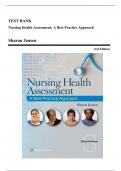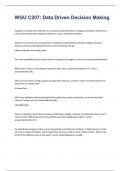Exam (elaborations)
Test Bank - Nursing Health Assessment: A Best Practice Approach, 3rd Edition (Jensen, 2019), Chapter 1-30 | All Chapters
Test Bank - Nursing Health Assessment: A Best Practice Approach, 3rd Edition (Jensen, 2019), Chapter 1-30 | All Chapters
[Show more]




